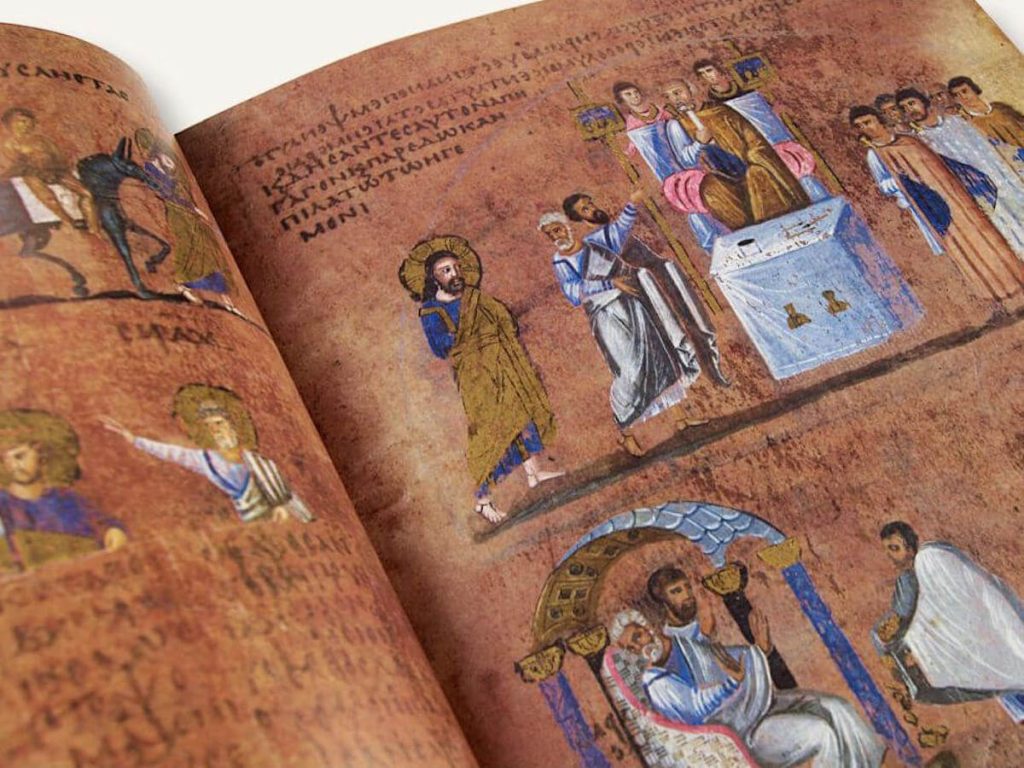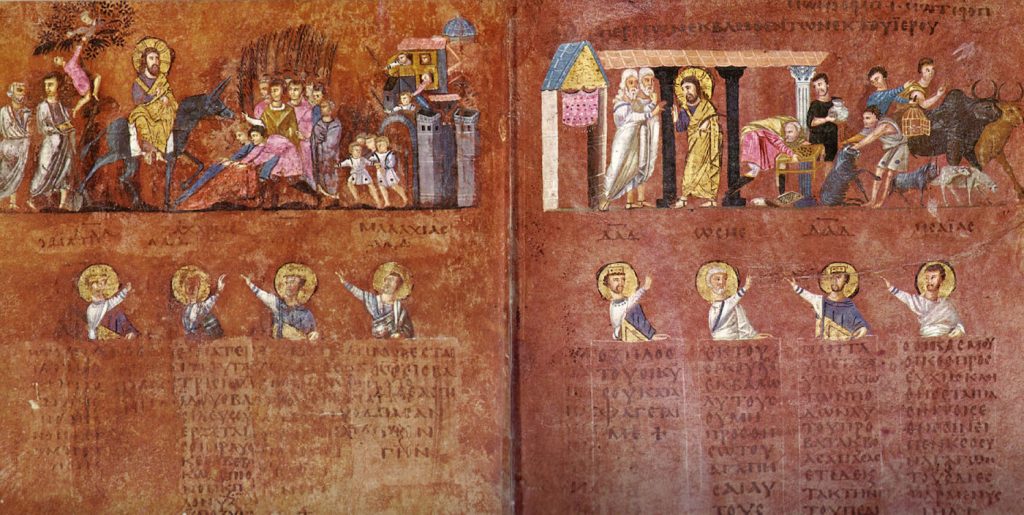La Calabria it is a region full of enchanting places full of history. One of them certainly is Rossano (better known as Rossano Calabro), fraction of Corigliano-Rossano, city of Cosenza born in 2018 from the merger of Rossano and Corigliano. Rossano Calabro is known to most for the production of licorice of the historic factory Amarelli, but it is also a city of great historical interest. This is in fact also the "Codex city". In Diocesan and Codex Museum di Rossano is in fact preserved the Codex Purpureus (Purple Codex or Codex Rossanensis). It is an ancient manuscript dating back to XNUMXth century AD di 188 sheets of parchment containing i Gospels of Mark and Matthew. The Codex is entirely in the Greek uncial language and is also embellished with 15 miniatures retracing the life of Jesus Christ. In 2015 theUNESCO has entered this very ancient gospel in the Register of World Remembrance.

History of Rossano
The history of Rossano begins in time pre-Roman, XNUMXth century BC. Its foundation is attributed to the people of Enotri. Like many other cities in Southern Italy, Rossano Calabro also saw it domination of different civilizations: first of all that Greek e Romanian. With domination Byzantine (from 540 to 1050) the city becomes a strategic place and lives a golden period, both from a military, cultural and artistic point of view. Its geographical position made it ideal as seat of the stratego (army chief), a secure military center that resisted invasions of Saracens, Longobardi e Visigoths. During the Byzantine period Rossano was also a great one religion center, thanks to the community of Basilian monks (the Codex Purpureus dates back to the XNUMXth century). The many signs of the Byzantine passage, even at an architectural level, earned Rossano the epithet "The Byzantine".

Starting fromXNUMXth century AD (until the unification of Italy), the Calabrian city first saw the Norman domination, then Swabian, Angevin, Aragonese, Spanish and, finally, Bourbon. From the second half of the nineteenth century, Rossano Calabro experienced a new period of development, becoming the first seat of court (1865) and court of assizes (1875), then with the inauguration of the Ionian railway (1876) and, finally, becoming one of the first cities in Calabria to benefit from thethe energy and electric lighting. In the twentieth century, from a hilly village, Rossano expanded towards the valley, thanks to the construction of new homes and infrastructure. The merger of with Corigliano in 2018 finally made it the third largest city in Calabria by population.
What to see in Rossano Calabrian
Rossano Calabro is a city where the sign of the Byzantines who lived its lands is clear. The most interesting place to discover Byzantine art in Rossano is the aforementioned Diocesan and Codex Museum. Although the main work kept is the Codex, there are also rooms with baroque works, Renaissance, eighteenth century e nineteenth century, but also a room dedicated to silvers. Next to the diocesan museum it is located a few steps from the Cathedral of the Most Holy Achiropita. This is most famous for the image of the Madonna Acheropita (i.e. not painted by human hand), probably dated between the sixth and eighth centuries. Example of Byzantine architecture is theoratory of San Marco (IX-X century), square in shape and with five cylindrical domes. Conceived as a female monastery dedicated to Saint Anastasia, was then transformed into a place of worship by St. Nilus (patron of the city). In the nineteenth century it became a cemetery for cholera patients.

"Giorgio Amarelli" Liquorice Museum
One of the unmissable places in Rossano, especially for the sweet tooth, is the Licorice museum "Giorgio Amarelli". Born in 2001, it is the only museum dedicated to licorice in Italy and tells the story of Amarelli family and the production and marketing of licorice, which has been going on since 1731, when the industrial plant was opened to transform the licorice roots into juice. Inside the museum are located Abit, papers e instruments used by the company over the centuries. In addition, in 2004 Poste Italiane dedicated a stamp at the Licorice museum, belonging to the series "The Italian artistic and cultural heritage". The fame of the museum has grown considerably over the years. The Amarelli museum is among the business museums with the most visitors in Italy, second only to Ferrari Gallery in Maranello.
In addition to licorice, Rossano Calabro also offers other interesting products from a gastronomic point of view. Other classic products of the area's cuisine are also the caciocavallo silane, Calabrian 'nduja, but above all the discouraged Rossanesi. These are typical sweets of the winter period (but not only), made of fried leavened dough and covered with cinnamon and granulated sugar.
Rossano Calabro is a welcoming city, suitable for all types of visitors, especially for those who love art and are passionate about history (especially Byzantine). Stopping in Rossano is a good reason to visit the district and also discover the naturalistic wonders of Calabria, such as the Oasis of the Giants of Cozzo del Pesco (with its centuries-old chestnut trees) or the Sila National Park. Once visited, Calabria remains in the heart.
Cover photo: © Mboesch - Wikimedia Commons (CC BY-SA 4.0)





